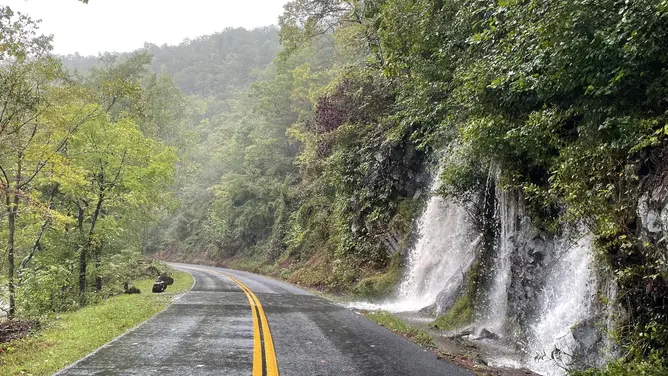 The Great Smoky Mountains, a beloved destination for millions of tourists each year, is facing an uncertain future following the devastating impact of a powerful storm. The storm, which swept through the region earlier this week, caused widespread damage to trails, roads, and key infrastructure within the national park, leaving communities and businesses that rely heavily on tourism scrambling to recover.
The Great Smoky Mountains, a beloved destination for millions of tourists each year, is facing an uncertain future following the devastating impact of a powerful storm. The storm, which swept through the region earlier this week, caused widespread damage to trails, roads, and key infrastructure within the national park, leaving communities and businesses that rely heavily on tourism scrambling to recover.
Park officials reported that the storm brought heavy rainfall, strong winds, and landslides, resulting in significant flooding of rivers and creeks. Key access roads, including parts of Newfound Gap Road and Little River Road, have been blocked by fallen trees and debris, while several hiking trails, including the popular Alum Cave and Rainbow Falls trails, remain closed due to hazardous conditions. Portions of campgrounds and visitor centers have also sustained damage, forcing the park to halt operations temporarily.
Park Ranger Samantha Ortega described the situation as one of the worst weather-related disruptions the park has experienced in recent years. “The storm hit us hard,” Ortega said. “Some of the trails are completely washed out, and infrastructure like bridges and drainage systems needs major repairs. Our priority now is ensuring the safety of visitors and staff while we assess the full extent of the damage.”
With over 14 million annual visitors, the Great Smoky Mountains National Park serves as a lifeline for the local economy, generating billions of dollars in tourism revenue. The surrounding towns, including Gatlinburg, Pigeon Forge, and Cherokee, North Carolina, depend on visitors for their livelihoods. However, business owners are now bracing for a sharp decline in visitors during the critical fall season, which is typically marked by vibrant foliage and peak tourist activity.
“It’s devastating,” said Jake Lawson, the owner of a bed-and-breakfast near Gatlinburg. “We had bookings lined up for October and November, but guests are already calling to cancel. Without those tourists, it’s going to be tough to make it through the winter.”
The National Park Service (NPS) is working around the clock to restore access and reopen damaged areas, but officials warn that full recovery could take weeks or even months. Repairs to heavily damaged trails may extend into the spring, impacting not only fall tourism but also winter visitors who flock to the area for holiday activities and skiing in nearby resorts.
While road crews have already begun clearing debris, more extensive repairs will require additional funding, much of which is uncertain given budget constraints. Park officials are urging visitors to check for updates before traveling to the area and to explore alternate destinations until critical sections of the park can be safely reopened.
The storm has also raised concerns about the increasing frequency of extreme weather events and their long-term impact on tourism in the region. Scientists warn that climate change is contributing to more intense storms and unpredictable weather patterns, which could make future disruptions more common.
Local leaders are calling for a coordinated effort to support recovery and rebuild the tourism sector. The mayors of Gatlinburg and Pigeon Forge have issued joint statements urging state and federal governments to provide financial assistance to repair infrastructure and help businesses stay afloat. “Our communities have been through disasters before, and we’ll rebuild stronger,” said Gatlinburg Mayor Mike Werner. “But we need help to get through the immediate crisis.”
Tourism boards and local businesses are also launching campaigns to encourage visitors to return once the park reopens. “The Smokies are resilient, and so are we,” said Christine Delgado, a spokesperson for the Smoky Mountain Tourism Alliance. “We’re working with the park to restore everything as quickly as possible, and we look forward to welcoming guests back soon.”
Despite the challenges, there is a sense of determination within the community to rebuild and recover. Volunteers have already begun organizing clean-up efforts, and several businesses have pledged to donate part of their earnings to help with park repairs.
In the meantime, tourism officials are recommending alternative activities in the region, such as exploring nearby attractions, visiting artisan villages, or supporting local restaurants and shops. They hope that with the community’s resilience and visitor support, the Smokies will bounce back stronger than ever, continuing to inspire generations with their natural beauty and charm.
